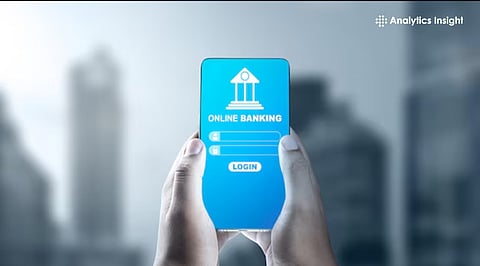

Always download banking apps only from official stores and verify the developer’s name for authenticity.
Fake apps reveal themselves through unusual permissions, poor design quality, mismatched logos, and suspicious details.
Cross-check app links with your bank’s official website to avoid phishing scams and fraudulent downloads.
Mobile banking is no longer just an option; it has become a necessity. Banks now allow customers to perform various operations, such as checking account balances, transferring money, and paying bills. These are all available via user-friendly applications on their mobile devices. However, security features of these apps often come at a cost.
Fraudsters are consistently developing new strategies to make fake banking applications to dupe people into providing them with access to personal and financial information. If you download an untrustworthy application, it is possible to be a victim of identity theft, an unauthorized transaction or even lose your entire savings.
The most essential element is to learn how to assess and recognize a fake bank while still analyzing the application to improve your financial safety. Below is a comprehensive list of instructions for staying safe.
First and foremost, please only download applications from the official stores: Google Play for Android users and Apple App Store for iOS users. Although with both stores, still take caution, as it is common for scammers to develop names similar to the banks' real names. Furthermore, do not download any application from a website that is not indicated as an official site or that was emailed or followed a link from a text message.
Always check the developer or publisher's name. Legitimate bank apps are published by the official bank or one of its recognized technology partners.
For instance, the developer of the Bank of America app should be listed as ‘Bank of America’ and not as some vague or unknown developer. A mismatch in developer names or the presence of unusual characters in an app's description is a major red flag.
Even though ratings and reviews can be fabricated, a reputable app is generally expected to have received several thousand downloads and reviews over time. Be cautious of an app with just a few downloads, no ratings, or ratings that are overly positive and generic. Look for reviews that are detailed, that describe the user's experience, and that describe usability and features.
Look at the permissions requested before you install an application. A banking application should be expected to only request permission relevant to its core function, such as the Internet or notifications.
Any type of application asking for permission to access your contacts, camera, microphone, or location, without justification or sensible reasoning, should raise a red flag. Generally, there is malicious intent behind the request.
Also Read: ED Uncovers Rs. 68 Crore Fake Bank Guarantee Scam Linked to Anil Ambani Group
Most fake apps will use slightly different logos, colors, or layouts than the real app. Look for large pixelated logos, misspelled words, or awkward layouts. A small deviation may warrant further investigation into a fake app. Real banks will have strict brand guidelines to adhere to so when there is a difference, it should raise suspicion.
Compare the application's size to the official one listed on the bank's website. The fake ones can be way too small or too big. Besides, check for updates: genuine banking applications are updated frequently to fix bugs and enhance security, while fake ones are never updated.
The best way to verify the authenticity of your bank app is to check it against your bank's website. Most banks will have a link directly to their app. If you are not sure, do not download the app from any other source.
Scammers can trick you into installing a fake app via email, SMS, or social media messages, claiming your account is in danger. Very seldom do real banks ask customers to install their apps through such messages. Always go directly to the app store or to the official bank site.
Also Read: Shocking Cyber Scam: Axis Bank Staff Helped Steal Rs. 500 Crore in Rajasthan
You can perform due diligence, which can protect you from fake bank applications. Stick to the app store, confirm developer information, read reviews, check permissions, and validate on the banks' website.
You should be able to have the advantage of mobile banking and not have the possibility of a scam application obtaining your personal information. When you see the information inconsistencies, it's a sure sign to investigate.
How can I quickly identify a fake banking app?
A fake banking app often has suspicious developer names, poor design, unusual permissions, limited downloads, and no official bank verification links anywhere online.
Why do scammers create fake bank apps?
Scammers create fake bank apps to steal sensitive information like login credentials, card numbers, and personal details, enabling unauthorized transactions, identity theft, and financial fraud.
Are apps from Google Play or the App Store always safe?
Not always. While safer than third-party sites, fake apps sometimes slip through. Always check developer names, reviews, permissions, and confirm through your bank’s website.
What permissions should a legitimate banking app normally request?
A legitimate banking app typically asks for internet access, notifications, and security features. Requests for contacts, camera, or microphone access may signal suspicious or malicious intent.
What should I do if I accidentally installed a fake banking app?
Immediately uninstall it, change all banking passwords, contact your bank, check recent transactions, enable account alerts, and run a trusted antivirus scan on your device.
